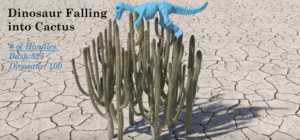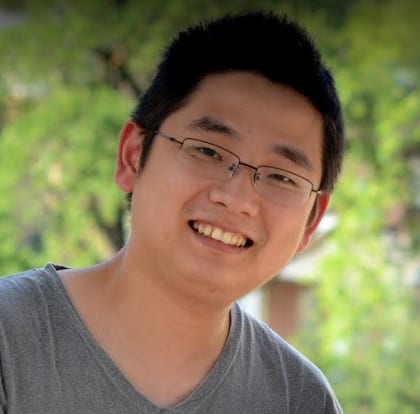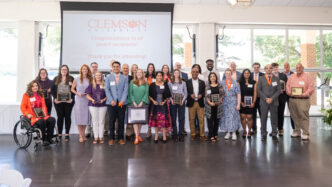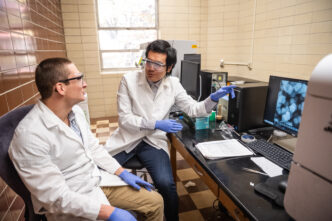It can seem like magic when computer graphics help bring a movie or video game to life, but there’s no wizardry involved at all.
Yin Yang, an associate professor of visual computing at Clemson University, said what makes the graphics seem so realistic is a blend of art, math, physics and computer programming. For the graphics’ creators, the combination can be difficult to master but rewarding beyond words, he said.

“The moment you see your work rendered on the screen– I don’t know how to describe the feeling, it’s so fascinating,” Yang said. “It’s not just a number you pump out. It’s animation!”
Yang brought his unique skill set to Clemson a year and half ago, and in August he’s sharing it with the world. He and his team will be presenting four separate papers to some of the globe’s top computer graphics experts at the conference ACM SIGGRAPH.
The Yang team will describe in technical detail what it has created to help make computer graphics more realistic. Their work is illustrated with several animations, including an armadillo dropping into a cactus, barbarian ships bouncing off walls, light reflecting off a framed picture and clothing ruffled as if pulled by an invisible hand.
Amy Apon, the C. Tycho Howle Director of Clemson’s School of Computing, said Yang’s presence at the conference will help boost the University’s reputation in computer graphics research.
“ACM SIGGRAPH is one of the field’s top conferences, and it is highly selective about which papers are presented,” Apon said. “Having four papers accepted to the conference is a reflection of Dr. Yang’s high productivity and his excellence in the field. This is a well-deserved honor and opportunity for him.”

Yang left the University of New Mexico in December 2019 to join Clemson. He said he was the only one in his field in New Mexico, and moving to Clemson gave him the opportunity to collaborate with the University’s other visual computing faculty members.
Their expertise in areas such as robotics and motion planning complemented his own specialty, physics-based animation, Yang said.
“If we come together, we’re able to make very compelling and comprehensive solutions to some of the more challenging problems,” he said.
Just about everyone has seen computer graphics used in movies and video games, but the work that Yang does also helps lay the groundwork for lifelike virtual reality simulations and research projects. Researchers could, for example, incorporate the graphics into a virtual bridge that is tested on a computer before its built in real life, Yang said.
Three Ph.D. students and one postdoctoral researcher work in Yang’s lab, giving them an opportunity to conduct cutting-edge research in computer graphics. Yang said those who work in his lab leave well prepared for a broad assortment of careers in the tech industry.
Yan Dong decided to join Yang’s group to pursue a Ph.D. after collaborating with him on research while she was a master’s student at the University of Pennsylvania. His SIGGRAPH showing was a factor in her decision, she said.
“SIGGRAPH is a top conference and publishing papers in this conference is difficult,” Dong said. “I want to publish papers in SIGGRAPH, and Dr. Yang is a very good advisor who can help me in publishing papers.”
Yang said his work is close to what is done in another Clemson program, Digital Production Arts, but different enough that he is not part of the program. Students in Digital Production Arts produce interesting digital content with existing software as if they were the director of the movie, while his work is a little further upstream, he said.
“I start the theoretical aspect of this process,” Yang said. “I design different computational methods and algorithms and numerical solutions to help the artist achieve their goal.”
The papers that Yang and his students will present at SIGGRAPH are: “Medial IPC: Accelerated Incremental Potential Contact with Medial Elastics;” “High-order Differentiable Autoencoder for Nonlinear Model Reduction;” “Scalable Image-based Indoor Scene Rendering with Reflections;” and “A Safe and Fast Repulsion Method for GPU-based Cloth Self Collisions.”
You can view all four papers at Yang’s webpage here.







